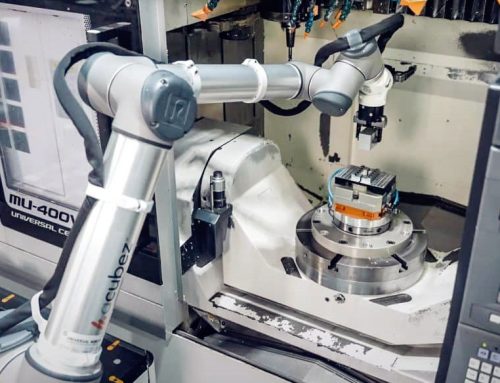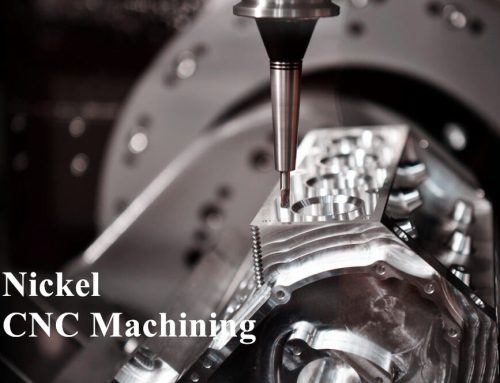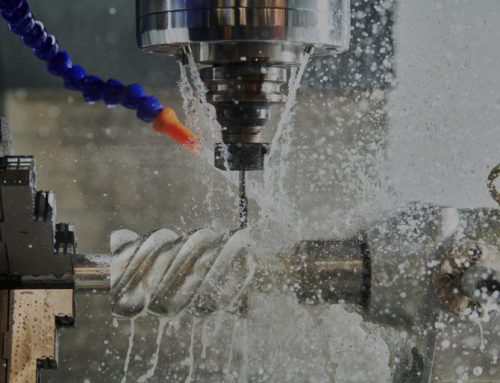The fast-paced industrial landscape of today cannot allow negotiation of precision, speed, or efficiency. Here is where CNC machining finds application—turning simple materials into incredibly intricate and exact components in many different fields. For everything from one-off prototypes to mass-produced parts, by automating manufacture using computer-guided tools, CNC machining assures unparalleled accuracy, reproducibility, and scalability. Still, have you ever given any thought to which industries most rely on CNC manufacturing? From aerospace to healthcare, from automotive to renewable energy, from aircraft to CNC-machined components, they assist in producing the goods and infrastructure that run our modern society. Every sector has unique requirements; CNC technology offers adaptable machining solutions covering a broad range of materials, including metals, plastics, and composites, to meet them. This blog will examine the industry that is most dependent on CNC machining, look at the kinds of parts generated there, and highlight the reasons this contemporary manufacturing process is so important.

What is CNC Machining?
Before delving into particular sectors, one needs to know what CNC machining is all about. Pre-programmed computer software used in CNC machining controls the tool and machine movement. It helps materials—including metal, plastic, and composites—to be cut, drilled, milled, and turned into precisely tailored pieces.
CNC machining stands out for its:
- Repeatability and precision
- Harmony with a broad spectrum of materials
- Effective low- and high-volume production
- Automation and little human error
These advantages have made CNC machining indispensable in many different fields.
-
Aerospace Industry
Why It’s Used:
Highest degrees of dependability, durability, and accuracy are what the aerospace sector expects. Components of aircraft have to satisfy rigorous safety criteria and withstand harsh environments. High-performance products demand the degree of accuracy CNC machining offers.
Common CNC-Machined Parts:
- Engine components (turbine blades, housings)
- Aircraft structural parts (wings, fuselage sections)
- Landing gear components
- Interior elements (seat frames, control panels)
Materials Used:
Titanium, aluminum, high-strength steel, and specialized composites.
-
Automotive Industry
Why It’s Used:
Mass production, prototyping, and vehicle development all depend critically on CNC machining. It lets automakers create robust, uniform, sophisticated parts with quick turnaround times.
Common CNC-Machined Parts:
- Engine blocks and cylinder heads
- Transmission components
- Brake system parts
- Custom aftermarket parts
- Interior trims and dashboards
Benefits:
- Speed up design validation with prototypes
- Support mass production with low defect rates
- Ensure part interchangeability
-
Medical & Healthcare Industry
Why It’s Used:
Within the medical industry, the margin for error is virtually nonexistent. Medical equipment, implants, and surgical tools that have to follow tight guidelines and exact specifications are best created using CNC machining.
Common CNC-Machined Parts:
- Surgical instruments (scalpels, forceps)
- Orthopedic implants (hip and knee joints)
- Prosthetics
- Diagnostic equipment components
Materials Used:
Stainless steel, titanium, and medical-grade plastics like PEEK and PTFE.
Key Advantages:
- Biocompatibility of materials
- High repeatability for FDA compliance
- Quick prototyping for clinical trials
-
Electronics Industry
Why It’s Used:
CNC machining guarantees that internal and external components fit exactly and operate consistently as electronic devices reduce in size but become more complicated.
Common CNC-Machined Parts:
- Heat sinks
- Housing for PCB enclosures
- Connectors and mounts
- Custom chassis for devices
Benefits:
- Micro-machining tiny pieces with great accuracy
- supports fast prototyping of innovative products.
- High volume output within strict constraints
-
Defense and Military Industry
Why It’s Used:
The defense sector needs tough, high-performance components able to resist harsh environments. Consistency and dependability for missions depend on CNC machining.
Common CNC-Machined Parts:
- Weapon components (barrel assemblies, mounts)
- Aircraft and drone parts
- Naval hardware
- Communication systems
Materials:
High-grade metals and alloys that offer strength, resistance, and longevity.
Compliance:
Parts sometimes must satisfy strict defense criteria, such MIL MIL-SPEC.
-
Oil and Gas Industry
Why It’s Used:
Extreme pressures, high temperatures, and corrosive surroundings define drilling and exploration tools. Precision parts made by CNC machining can satisfy such needs.
Common CNC-Machined Parts:
- Valve bodies and actuators
- Pistons, rods, and cylinders
- Drill bits and nozzles
- Fittings and connectors
Features:
- Precision tolerances for operations free of leaks
- Products resistant to wear and corrosion
- Adaptation for certain well environments
-
Industrial Equipment Manufacturing
Why It’s Used:
From robotics to packaging equipment, industrial gear depends on CNC-machined parts for dependability and smooth running.
Common CNC-Machined Parts:
- Gearboxes and sprockets
- Shafts and rollers
- Robotic arms
- Conveyor system components
Advantages:
- effective manufacturing of durable components
- From concept to production: scalability
- Custom production for specialized tools
-
Marine Industry
Why It’s Used:
By producing parts able to survive continuous exposure to wet, salinity, and high-stress situations, CNC machining helps the marine sector.
Common CNC-Machined Parts:
- Propellers
- Hull components
- Engine mounts and brackets
- Navigation system parts
Key Characteristics:
- Strong resistance to corrosion
- Precision engineering for challenging marine systems
-
Renewable Energy Industry
Why It’s Used:
Custom, highly performance parts are needed for wind turbines, solar panel systems, and hydroelectric infrastructure. CNC machining facilitates meeting these efficiency and environmental targets.
Common CNC-Machined Parts:
- Wind turbine hubs and gearboxes
- Solar panel mounting hardware
- Hydroelectric turbine blades
- Energy storage enclosures
Benefits:
- Supports green innovation
- Enables quick iteration for R&D
- Reduces manufacturing waste
-
Consumer Products Industry
Why It’s Used:
CNC machining helps even the consumer market, especially for luxury and customised products.
Common CNC-Machined Parts:
- Custom kitchenware
- Watches and timepieces
- Bicycle components
- Luxury electronics
Features:
- Aesthetic surface finishes
- Unique shapes and custom designs
- Small-batch production
Why CNC Machining is So Widely Adopted
Here are the main reasons CNC machining has evolved into a pillar in many different sectors:
- For both prototypes and manufacturing, speed is a quick turnaround.
- Precision down to microns: Accuracy
- Consistency over hundreds of components defines repeatability.
- Applied to several materials and part shapes, flexibility is relevant.
- Suitable for one-off custom parts or huge production runs, it is scalability.
Final Thoughts
Far more than just a production technique, CNC machining is a vital enabler of innovation and performance in many different sectors. From surgical tables to solar farms and from the heavens to the seas, CNC-machined parts run the vital gear and tools we depend on every day.
CNC machining provides the accuracy, dependability, and efficiency needed to thrive regardless of your industry—engineering wanting to prototype a new product, or manufacturing, growing operations.




